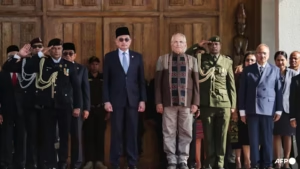Washington, D.C. – In 2025, the United States continues to lead global military aviation with a fleet size that overshadows its nearest competitors. According to the latest data from World Population Review, the U.S. Armed Forces collectively operate over 14,000 military aircraft — more than the next nine countries combined.
The scope of the U.S. air fleet extends across four major branches: the Air Force, Navy, Army, and Marine Corps. Each operates hundreds to thousands of aircraft from key strategic locations, including Joint Base Andrews and Nellis Air Force Base. This wide distribution allows the U.S. to project power on a global scale with unmatched readiness.
Russia and China remain the closest competitors, ranking second and third respectively. Russia fields over 4,200 aircraft through the Russian Aerospace Forces, while China’s People’s Liberation Army Air Force manages approximately 3,300. Despite ongoing modernization efforts, both countries trail behind in total numbers and advanced platforms.
A detailed breakdown places the U.S. Air Force at the top with 5,004 aircraft. The Army Aviation Command follows with 4,333, the Navy with 2,504, and the Marine Corps with 1,211. These figures reflect a rare breadth in capability — from strategic bombers to vertical lift and logistics support.
In terms of fighter power, the United States maintains a fleet exceeding 2,600 aircraft, including a significant portion of fifth-generation jets like the F-22 Raptor and F-35 Lightning II. China’s growing J-20 and J-35 programs signal ambition, but remain behind in terms of deployment scale and combat readiness. Russia’s Su-57 remains limited in number and operational availability.
When it comes to strategic bombing, only three nations retain active bomber fleets: the United States, China, and Russia. The U.S. fields 140 bombers, including stealth B-2 Spirits and the enduring B-52. China leads in raw numbers with 209 aircraft, while Russia’s fleet of 120 faces increasing challenges due to aging platforms and constrained resources.
Helicopter capability also shows wide disparity. The United States leads with more than 5,500 helicopters, including the Apache, Chinook, and the V-22 Osprey — a unique tiltrotor platform. Russia follows with 1,551 helicopters, while India, Japan, and China operate significantly smaller fleets.
Airlift capability further highlights the U.S. advantage. With over 1,000 transport aircraft, the U.S. military ensures rapid global mobility. Key platforms like the C-17 Globemaster III and C-130 Hercules are core to this logistical superiority. Russia and China are developing their own large transport aircraft, but face limitations in global range and support infrastructure.
As 2025 progresses, the data underscores a familiar truth: the United States remains the preeminent global air power, not only in quantity but in versatility, reach, and technological edge.









